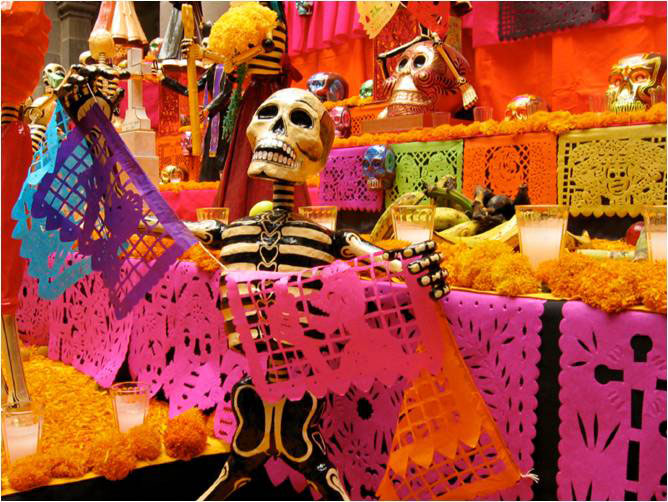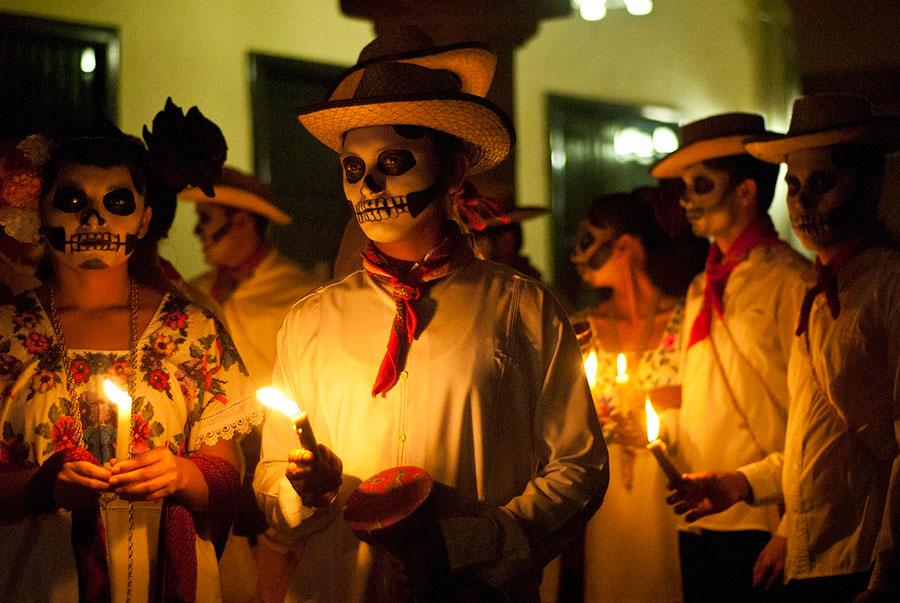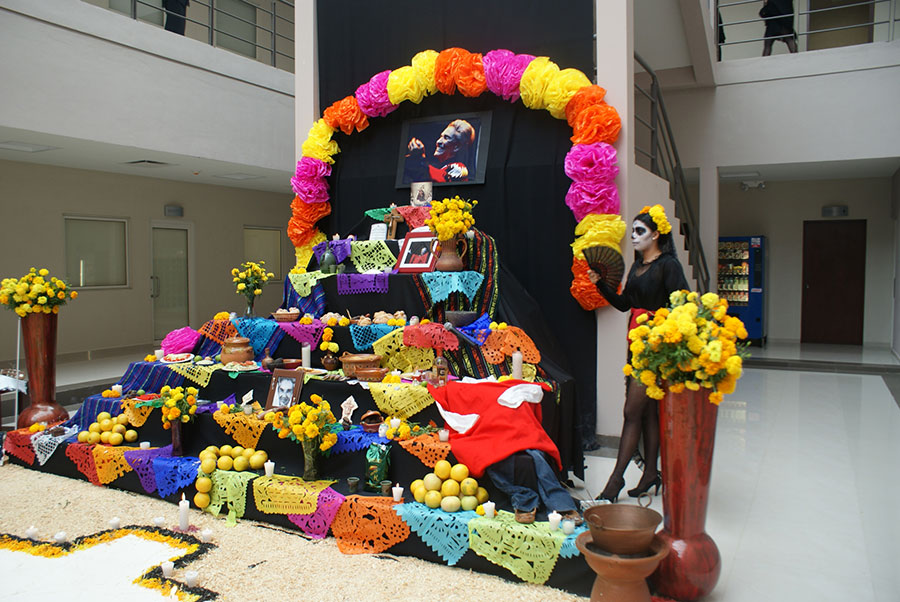Appointed the masterpiece of humanities heritage, day of the dead is one of the holidays depicting Mexico all over the world. While the celebrations last two days, the preparations, research, and meaning goes far beyond. There are several traditions that surround this holiday and also depend on the culture of each place in where it is held.
On November 1st and 2nd, the Mexican people come together to host a party to greet the souls, leaving them their favorite foods during their life existence at an altar, as well as some elements that will help them find the way back. These altars of the dead are well known around the world and there are even several contests that are dedicated to preserving this tradition, as well as the altars that are easy to assemble.
The “dead altars” are made up of different steps or levels, which represent heaven, earth, and the underworld. There are altars that have seven steps; these represent the seven deadly sins according to the Otomi belief, or seven levels that a soul must go through to rest, according to other beliefs. The items offered on the table are, apart from food for the deceased, marigold flowers, pan de muerto; elements such as fire, wind, and earth are represented by candles, incense, spiritual confetti, and salt.
The sugar and chocolate skulls are another important part of the altar and of the traditions of this holiday. The little skulls represent the deceased person and bear the name of the person on the front. Also, taken as a joke some dedicate a skull to a living person. At the end of the festivities, these skulls can be consumed by relatives and friends of the deceased. However, in some cultures it is believed that the food that was offered loses the flavor and essence when the deceased has made his visit and the food cannot be eaten anymore.
In addition to the sugar skulls, there is another type of skull in Mexico’s day of the dead traditions. The tradition of writing a composition in verse, which has a comical touch, called calaverita literary. These skulls were born in the 19th century with the need to discuss serious problems or unhappy topics about policy, which outside comedic tones, would be very difficult to express. Therefore, they were censored for many years, before integrating them into tradition.
Another important tradition of day of the dead is to visit the cemeteries where the faithful departed are buried. Some cultures spend days and nights beside the grave of their loved ones and others only visit the place to bring them flowers and dedicate them prayers. Marigold flower bows are also made and people will visit with several candles for the deceased to help them find their way home.
All of these traditions together represent one of the largest in Mexico since pre-Hispanic times, enriched with Spanish culture and the Catholic Church to become what we now know as day of the dead. Many cultures celebrate their own versions of this holiday, as part of the family heritage and homeland. All of these celebrations converging on the idea that someday the deceased will be back with those people who loved them in life and that, for now, only come to visit them one day of the year, on the day of the dead.





